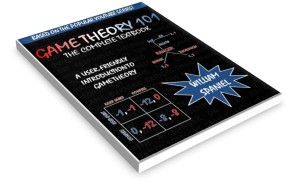This lecture begins a unit that analyzes how the prisoner’s dilemma works when the players play it multiple times in succession. We begin with the case where there is a fixed, finite endpoint of the game. It may seem that the threat to defect in later stages might inspire the players to cooperate earlier on. Unfortunately, that logic fails here.
Takeaway Points
- Review point #1: a subgame perfect equilibrium of any finitely repeated game is for the players to play a Nash equilibrium of the stage game. As such, both players defecting in every period is an equilibrium.
- Review point #2: players must a Nash equilibrium in the final stage of a repeated game. Thus, they must defect in the last stage of any subgame perfect equilibrium.
- In the second to last stage, whatever payoffs the players have accrued from earlier are locked in. Also, the players will defect in the next stage, so those payoffs are also locked in. As such, the players must choose their payoffs in the second to last stage to maximize their payoff only for that stage. This means they defect.
- In the third to last stage, it is still the case that whatever payoffs have accrued from earlier are locked in. From above, the players will defect for the remainder of the game. As such, they must maximize for the current stage, which means defecting.
- This logic repeats all the way up to the first stage. Consequently, both players defecting in each stage is also the only subgame perfect equilibrium.

